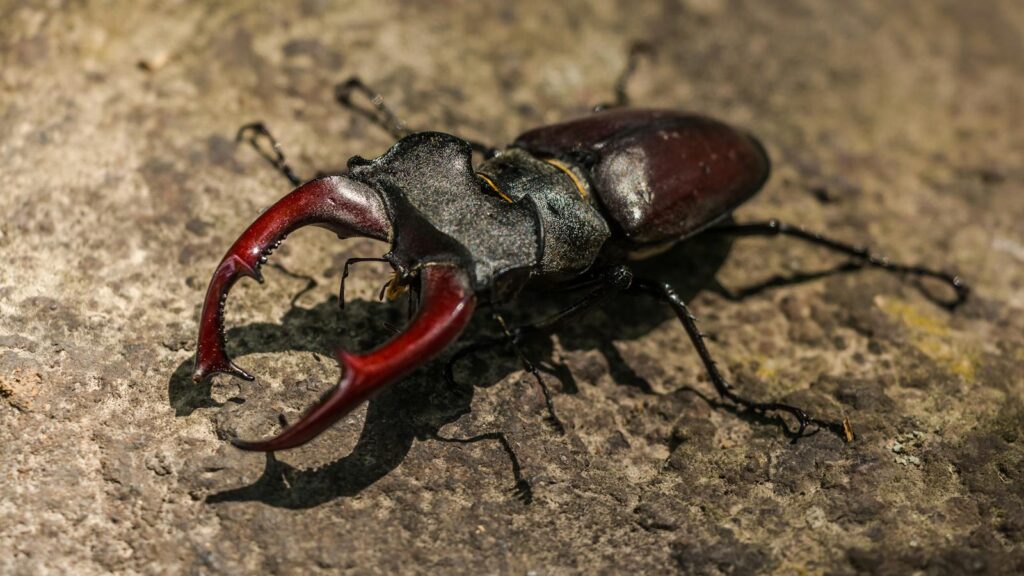The humble beetle, representing nearly 40% of all insect species, stands as one of nature’s most successful evolutionary stories. While their diversity spans countless habitats and lifestyles, perhaps their most remarkable feature lies in their extraordinary natural armor. Beetle exoskeletons represent biological engineering at its finest—living fortresses that have evolved over millions of years to protect these creatures from predators, environmental challenges, and physical damage. From iridescent shields that dazzle potential threats to reinforced body coverings that can withstand crushing forces hundreds of times their body weight, beetle armor showcases nature’s ingenuity at its most impressive. This remarkable defensive adaptation has not only ensured beetles’ survival across eons but has also inspired scientists and engineers seeking to replicate these natural designs. Let’s explore the fascinating world of beetle armor—its composition, incredible diversity, evolutionary significance, and the cutting-edge research it continues to inspire.
The Fundamental Structure of Beetle Armor

At its core, beetle armor consists primarily of an exoskeleton made from chitin, a tough polysaccharide that forms chainlike molecules similar to those found in plant cellulose. This chitin is combined with proteins to form a material called cuticle, which varies in thickness, hardness, and flexibility across different beetle species. The cuticle is arranged in multiple layers, typically including an outer epicuticle that provides waterproofing and chemical resistance, a middle exocuticle that offers rigidity and strength, and an inner endocuticle that provides some flexibility. This layered construction creates a remarkably effective composite material that combines lightweight properties with exceptional strength, allowing beetles to maintain mobility while enjoying superior protection. Additionally, specialized cells continuously maintain and repair this living armor throughout the beetle’s life, ensuring its protective qualities remain intact even after minor damage.
Evolutionary Origins of Beetle Armor

The evolutionary journey of beetle armor began over 300 million years ago during the Carboniferous period, when early beetle ancestors first developed hardened forewings called elytra. These modified wings evolved to serve as protective shields covering the delicate hindwings and soft abdomen, representing one of the most significant adaptations in insect evolution. Fossil evidence reveals a gradual progression from primitive beetle-like insects with partially hardened wings to the fully armored forms we recognize today. This evolutionary transition correlates with periods of increased predation pressure, suggesting natural selection strongly favored enhanced protective capabilities. The diversification of beetle armor accelerated during the Jurassic and Cretaceous periods alongside the radiation of insectivorous birds, mammals, and reptiles, creating an evolutionary arms race that pushed beetle defenses to new levels of sophistication. As beetles colonized diverse habitats from deserts to rainforests, their armor further specialized to address specific environmental challenges and threats.
Extreme Hardness: The Ironclad Beetles

Among the most impressive examples of beetle armor are the ironclad beetles (Nosoderma diabolicum), whose exoskeletons showcase nature’s engineering prowess at its finest. These remarkable insects can withstand crushing forces equivalent to 39,000 times their body weight—the human equivalent of surviving the weight of several full-sized school buses. Scientific analysis reveals that this extraordinary strength comes from specialized interlocking structures where the beetle’s elytra meet, creating a seam called the medial suture. Unlike most beetles that can fly by opening their elytra to deploy their hindwings, ironclad beetles have permanently fused their protective shields, replacing the typical insect locking mechanism with complex puzzle-piece joints that distribute force throughout the exoskeleton. These joints contain layered microstructures that function like structural sutures, allowing progressive deformation that absorbs energy without catastrophic failure. Engineers at the University of California, Irvine have studied this design for applications in joining materials in aerospace and automotive industries, demonstrating how this natural design solves complex mechanical problems.
Chemical Warfare: Defensive Secretions and Armor
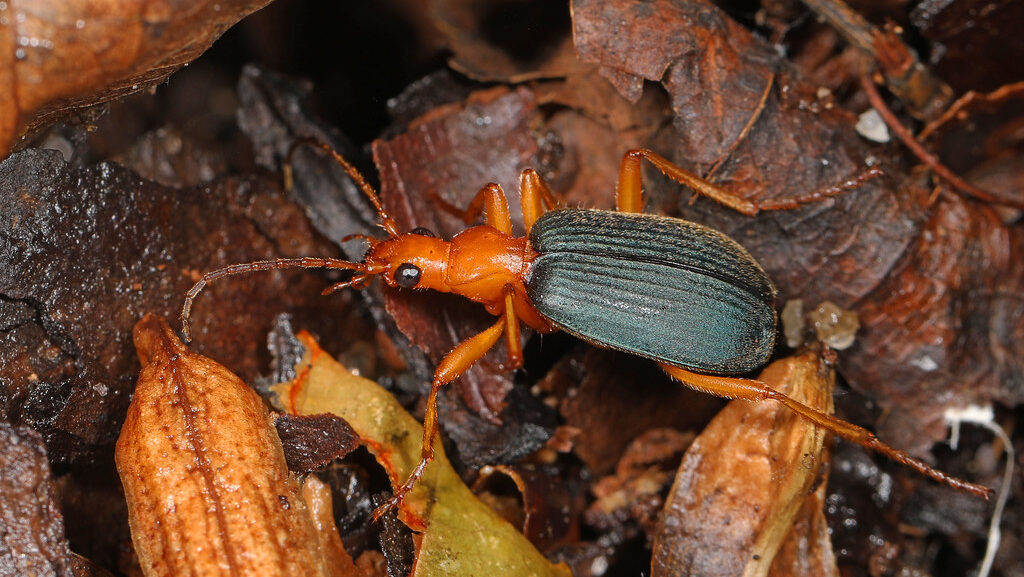
Beyond physical protection, many beetles have evolved exoskeletons that integrate sophisticated chemical defense systems directly into their armor. Bombardier beetles represent the pinnacle of this evolution, housing specialized chambers within their exoskeletons that contain separate chemical compounds which, when mixed, create explosive reactions reaching temperatures of nearly 100°C. Their armor includes precisely designed ejection canals and reaction chambers that can aim these chemical sprays with remarkable accuracy at predators. Other beetles, like many species of darkling beetles and blister beetles, have modified their exoskeletons to include specialized glands that secrete toxic or distasteful compounds when threatened. The exoskeleton itself often evolves to complement these chemical defenses, with special pores, channels, or reservoirs that store, process, or deliver defensive compounds. In these species, the armor serves a dual purpose—physical protection and an integrated delivery system for chemical deterrents that make the beetle an unappealing or dangerous meal for would-be predators.
Structural Coloration: Beauty as Defense
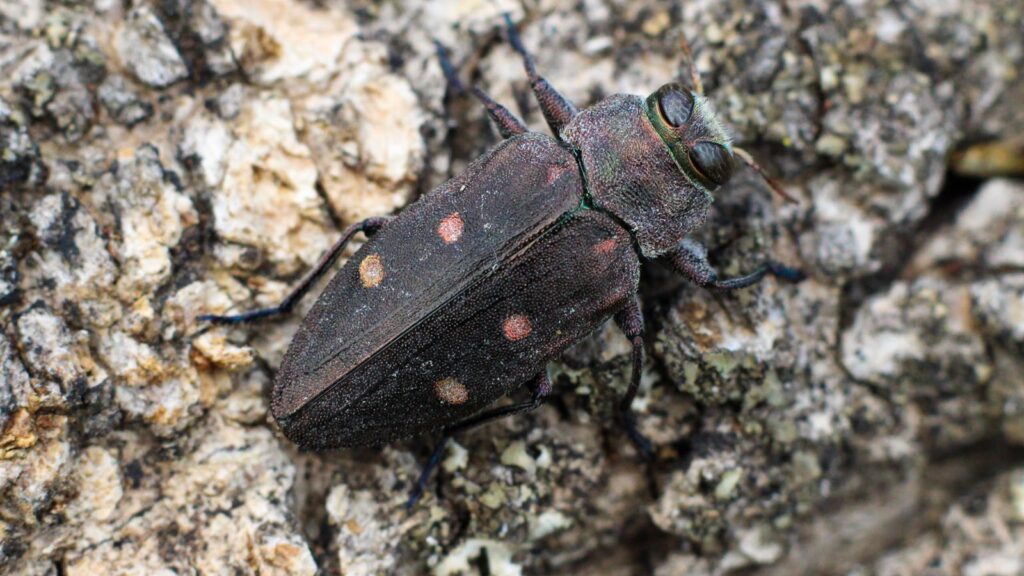
Many beetle species display dazzling metallic colors and iridescent patterns that arise not from pigments but from the nanoscale structure of their exoskeletons. These brilliant displays result from physical structures within the cuticle that manipulate light through interference, diffraction, and scattering—a phenomenon known as structural coloration. The jewel beetles (Buprestidae) and certain leaf beetles (Chrysomelidae) showcase some of the most vivid examples, with colors that shift and change depending on the viewing angle. Beyond their aesthetic appeal, these structural colors often serve defensive functions, helping beetles blend into colorful surroundings or confusing predators with flashy, disorienting displays. Research has revealed that these color-producing structures frequently serve additional functions, enhancing the strength and hardness of the exoskeleton through layered arrangements that distribute force effectively. The multifunctional nature of these structures represents an evolutionary masterpiece of efficiency, where a single adaptation provides both protection and communication benefits simultaneously.
Specialized Armor for Specialized Lifestyles
Beetle armor shows remarkable specialization across different ecological niches, with each adaptation finely tuned to specific environmental challenges. Burrowing species like the rhinoceros beetles (Dynastinae) feature reinforced head capsules and prothorax regions that withstand the stresses of digging through soil and wood. Aquatic beetles have developed hydrophobic exoskeleton surfaces that trap air bubbles, allowing them to breathe underwater while maintaining buoyancy. Desert-dwelling beetles often possess thickened, waxy epicuticle layers that prevent water loss in arid conditions, with some species evolving microscopic bumps and channels on their exoskeletons that collect moisture from fog. Bark beetles that live under tree bark have evolved flattened bodies with specialized armor that resists crushing in their tight quarters. These diverse adaptations demonstrate how beetle armor evolves not just as protection against predators but as comprehensive solutions to the physical challenges of their preferred habitats, showcasing the remarkable versatility of the basic exoskeleton design.
The Arms Race Between Predators and Beetle Armor

Beetle armor has evolved in a continuous evolutionary arms race with predator attack strategies, creating increasingly sophisticated defenses to counter specialized predation techniques. Birds with strong beaks, like woodpeckers, have driven the evolution of particularly robust elytra in wood-boring beetles, while beetles frequently targeted by crushing mandibles of ants have developed smoother, harder exteriors that resist crushing. Some beetle species facing puncture attacks from insectivorous mammals have evolved layered armor structures that dissipate force and prevent penetration. Particularly fascinating are the defenses that have evolved against parasitoid wasps, whose ovipositors attempt to pierce beetle armor to lay eggs; in response, some beetles have developed microscopic surface textures that make it difficult for wasps to stabilize their ovipositors during attack attempts. The ongoing nature of this arms race is evident in regions with high predator diversity, where beetle species tend to have more advanced defensive adaptations compared to their relatives in predator-poor environments, providing a living demonstration of coevolutionary processes shaping natural armor systems.
The Mechanical Properties of Beetle Armor

From a materials science perspective, beetle exoskeletons represent some of nature’s most impressive composite materials, combining multiple mechanical properties that often exceed manufactured alternatives. The cuticle achieves an exceptional strength-to-weight ratio through its combination of chitin fibers arranged in a helicoidal structure embedded within a protein matrix—a design that imparts high tensile strength while maintaining lightweight properties. Impact resistance is enhanced in many species through microscopic structural elements that absorb and dissipate energy, similar to modern crumple zones in automobiles. Measurement of the mechanical properties reveals that some beetle cuticles achieve hardness values comparable to industrial plastics while maintaining flexibility through specialized joint regions. Perhaps most impressive is the ability of this living material to self-heal minor damage and continuously remodel in response to stress, capabilities well beyond current synthetic materials. Engineers studying beetle cuticle have documented its remarkable resistance to crack propagation, where microscopic structures stop small cracks from growing into catastrophic failures—a property particularly valuable for designing safer aircraft components and body armor.
Biomimetic Applications: Learning from Beetle Armor

The extraordinary properties of beetle armor have inspired numerous biomimetic applications across different fields of technology and engineering. Researchers at McGill University have developed a new class of composite materials based on the layered structure of the ironclad beetle’s exoskeleton, creating lightweight materials with superior impact resistance for use in protective equipment. The aerospace industry has taken particular interest in the helicoidal arrangement of chitin fibers in beetle cuticle, adapting this design principle to create more damage-resistant composites for aircraft fuselages. Medical technology has benefited from studies of the antimicrobial properties present in some beetle exoskeletons, leading to new biocompatible coatings for implantable devices that resist bacterial colonization. Perhaps most promising are developments in military and personal protection, where body armor designs incorporating principles from beetle exoskeletons have achieved improved flexibility and reduced weight while maintaining protective capabilities. The field of soft robotics has also drawn inspiration from the combination of rigid and flexible elements in beetle armor, creating new generations of robots that can better navigate complex environments while resisting damage.
Developmental Biology of Beetle Armor

The formation of beetle armor represents a fascinating area of developmental biology, involving complex genetic regulation and cellular processes. The exoskeleton develops through a series of molts during the larval stages, with the final adult armor forming during pupation when specialized cells called epidermal cells secrete the layers of the cuticle in a precisely coordinated sequence. Recent genetic studies have identified several key regulatory genes that control the thickness, composition, and microstructure of the developing armor, with mutations in these genes sometimes producing beetles with altered protective capabilities. The developmental timing is critical, as different components of the armor must harden at specific rates to achieve the proper final structure, with the process controlled by hormonal signals that coordinate development across the entire body. Particularly intriguing is the development of specialized armor features like defensive spines or textured surfaces, which form through carefully programmed cell growth and secretion patterns during specific developmental windows. Understanding these developmental pathways has significant implications for both evolutionary biology and biomaterials research, offering insights into how complex biological structures assemble themselves.
Armor and Thermal Regulation
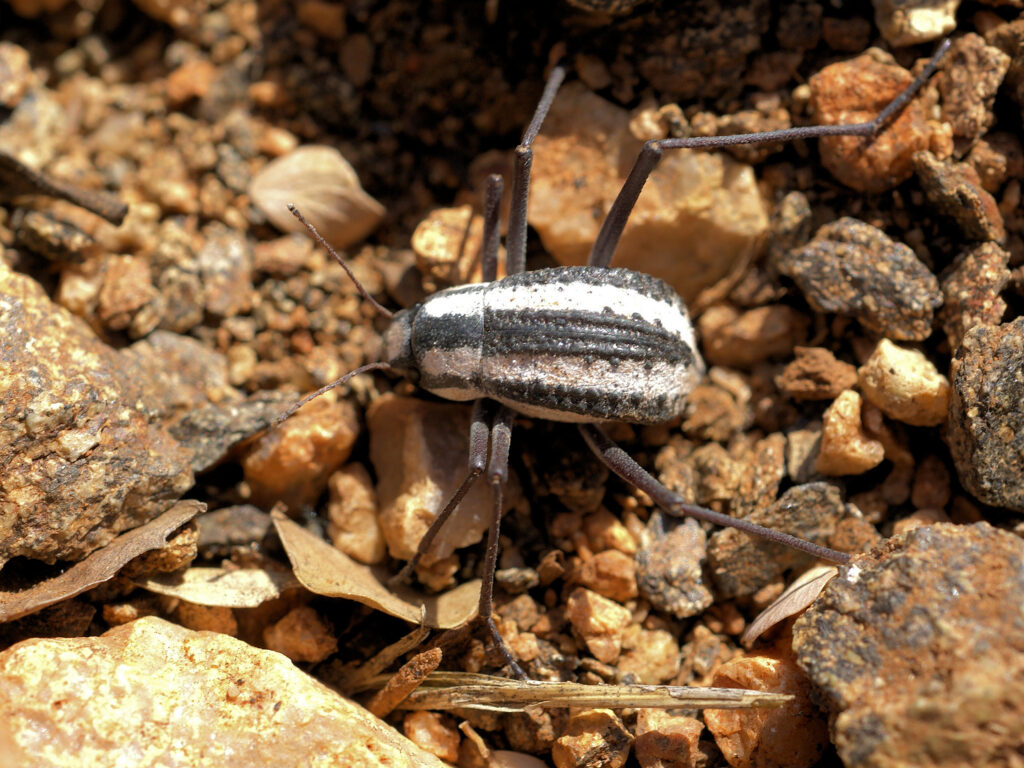
An often-overlooked function of beetle armor extends beyond protection to play a crucial role in thermal regulation, helping these insects survive in extreme environments. Desert-dwelling beetles like the Namib Desert beetle (Stenocara gracilipes) have evolved exoskeletons with specialized regions of hydrophobic and hydrophilic surfaces that collect water from morning fog, directing it to the beetle’s mouth—a remarkable adaptation that functions as both armor and water-harvesting technology. In cold environments, some beetle species have developed exoskeletons with air-trapping microstructures that provide insulation, while others incorporate melanin into their cuticle to absorb solar radiation more efficiently. Heat-stressed environments have driven the evolution of reflective armor in some species, where microscopic structures in the cuticle reflect infrared radiation to prevent overheating. Research has revealed that the thermal conductivity of beetle armor varies significantly between species, with desert beetles often having exoskeletons that minimize heat transfer to the internal organs. These thermoregulatory adaptations demonstrate how beetle armor functions as a multifunctional interface between the insect and its environment, simultaneously providing protection, water management, and temperature control.
The Future of Beetle Armor Research
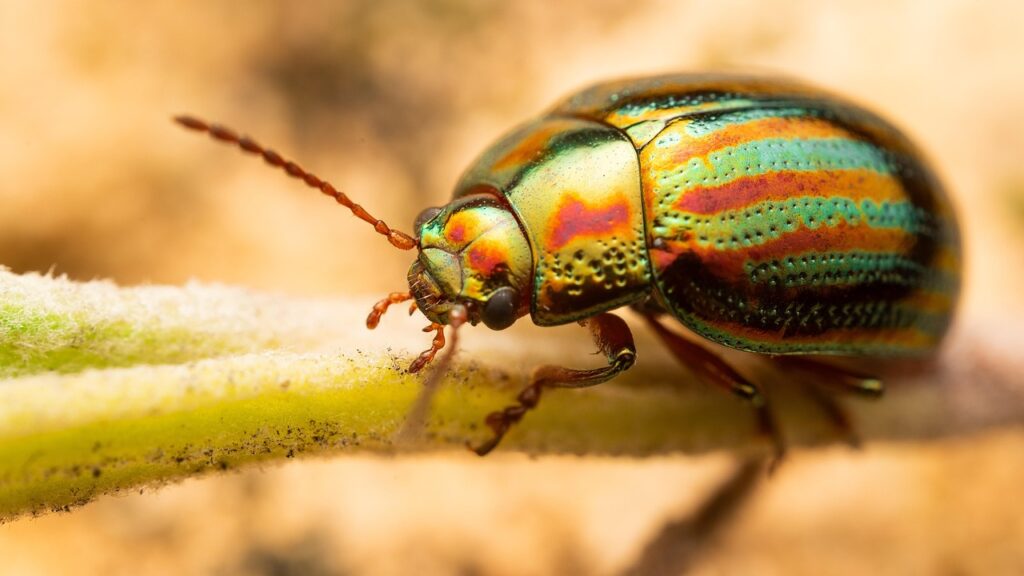
Current research into beetle armor is expanding rapidly with the application of advanced technologies like synchrotron X-ray imaging and atomic force microscopy, revealing previously unseen details of exoskeleton microstructure. These investigations are uncovering how nanoscale arrangements of chitin fibers contribute to the remarkable mechanical properties of beetle armor, providing blueprints for next-generation synthetic materials. Emerging studies in comparative genomics are beginning to identify the genetic basis for different armor types across beetle families, promising deeper insights into how evolutionary processes generate biological innovation. Particularly exciting is research combining materials science with synthetic biology, where scientists are exploring ways to grow engineered materials using principles derived from beetle cuticle formation. Climate change research is also examining how beetle armor adaptations might help predict which species will prove resilient to changing environmental conditions. As artificial intelligence and machine learning techniques are increasingly applied to analyze the complex structures of beetle exoskeletons, researchers anticipate discovering subtle design principles that have previously escaped human observation, potentially revolutionizing how we design protective materials for numerous applications.
Conservation Implications of Beetle Armor Studies
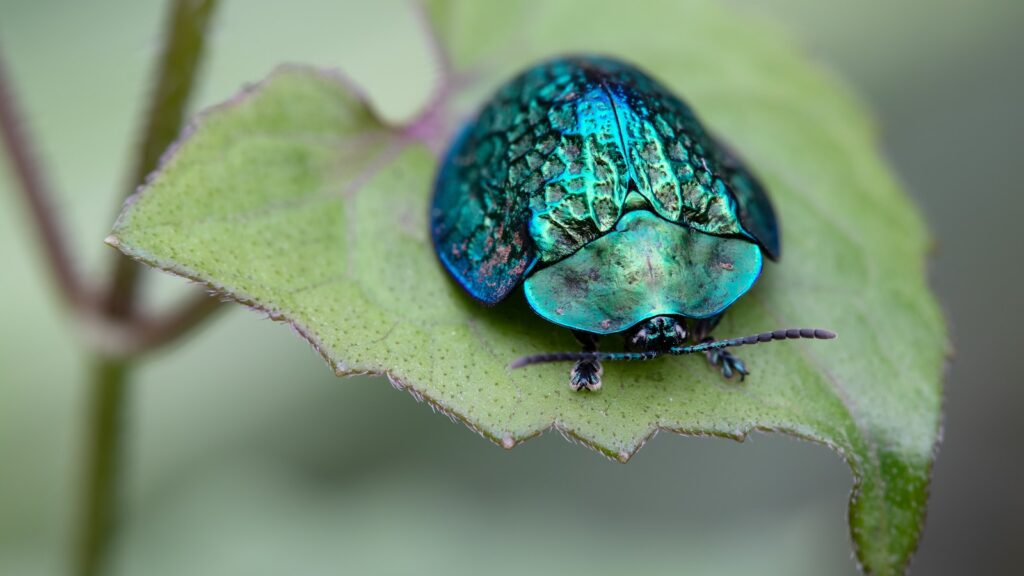
The study of beetle armor carries significant implications for conservation biology, particularly as we recognize the potential loss of nature’s engineering solutions through species extinction. Beetles with specialized armor adaptations often occupy narrow ecological niches that make them vulnerable to habitat disruption, with some species potentially disappearing before science can fully document their unique defensive innovations. Conservation efforts informed by studies of beetle armor increasingly focus on preserving not just genetic diversity but also the diversity of biomechanical solutions represented across beetle species. The field of conservation biomimetics has emerged to catalog biological designs at risk of being lost, with beetle armor representing a priority area due to its extraordinary technical sophistication. Beyond their scientific value, the aesthetic appeal of beetles with spectacular armor, like the rainbow scarab or the golden tortoise beetle, helps engage public interest in insect conservation—these living jewels serve as charismatic ambassadors for invertebrate conservation efforts. As climate change and habitat loss threaten beetle populations worldwide, the urgency of documenting and preserving these natural engineering marvels grows, representing not just a scientific imperative but the preservation of billions of years of evolutionary problem-solving that could benefit humanity.
Conclusion
The extraordinary armor of beetles represents one of nature’s most successful innovations—a living technology that has allowed these insects to thrive for hundreds of millions of years across virtually every terrestrial environment on Earth. From the ironclad beetle’s crush-resistant exoskeleton to the subtle iridescent shields of jewel beetles, these natural defense systems demonstrate principles of material design that human engineering is only beginning to understand and replicate. The ongoing exploration of beetle armor continues to yield surprising discoveries with applications ranging from medicine to aerospace engineering, showing how basic biological research can translate into practical innovations. As we face growing challenges in developing sustainable materials for the future, the humble beetle—with its lightweight, strong, multifunctional armor—offers inspiration and blueprints for solving complex engineering problems. Perhaps most importantly, the diversity of beetle armor reminds us that the natural world remains our greatest repository of design solutions, and its preservation ensures we don’t lose nature’s innovations before we can learn their secrets.

